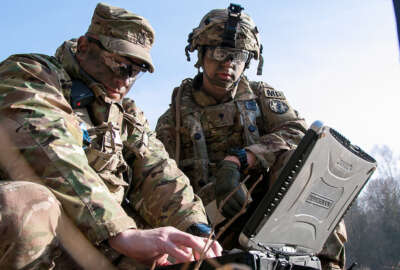
Defense policy bill orders reforms to deal with security clearances, electronic warfare
The Senate's Defense policy bill claims DoD has dragged its feet on previously-ordered management reforms that would create cross-functional teams to solve business...
A provision in the version of the 2019 Defense authorization bill the Senate passed Monday evening indicates lawmakers believe the Defense Department is dragging its feet on one of the largest business reforms Congress included in the 2017 edition of the annual bill: the creation of cross-functional teams.
The teams were supposed to bring more horizontal integration to Defense management, assembling leaders with expertise in various functional areas to help solve specific problems. The intent was for the CFTs to be empowered to come up with solutions that avoid DoD’s past tendency to find “consensus-seeking, lowest common-denominator” answers, according to the Senate’s language.
But so far, the Pentagon has stood up only one such team, according to the Government Accountability Office, which reported earlier this year DoD also hasn’t developed guidance or training for the CFT members — a specific requirement of the 2017 legislation.
In response, the Senate bill would give DoD’s CFTs specific problems to work on, while reiterating that lawmakers believe that the teams are an innovative management tool. Specifically, it would order DoD to set up CFTs on electronic warfare, security clearances, and the lethality of close-combat units.
“The committee appreciates the magnitude of change that the [2017 NDAA] mandated for the department, but continues to believe in the importance of promoting the cultural change enabled by CFTs across the department,” members of the Senate Armed Services Committee wrote in a report explaining the provision. “Only by integrating diverse expertise will the department be able to meet its most pressing challenges.”
On electronic warfare, Senators said they wanted DoD to assemble experts from the military services, the Joint Staff, U.S. Strategic Command, and the offices of the undersecretaries for policy, acquisition and sustainment, research and engineering, and personnel to work on the problem full-time.
The committee wrote that it’s concerned potential adversaries are developing an “asymmetric advantage” over the U.S. military in the EW realm.
“The department continues to approach the electronic warfare mission area and electromagnetic spectrum operations in an uncoordinated and insufficient manner that risks lagging further behind adversary efforts,” according to the Senate report, which also calls for DoD to draw up a new roadmap that would include “an analysis of any personnel, resourcing, capability, authority, or other gaps to be addressed in order to ensure effective implementation of the strategy across all relevant elements of the department.”
Latest Defense News
As for security clearances, other sections of the bill would beef up the budget of the Defense Security Service —$18.6 million and 129 more civilian personnel than the department requested — as that organization prepares to take on the task of conducting background investigations for DoD personnel.
But lawmakers stressed that a successful transition of that work from the Office of Personnel Management will require business reforms in addition to new money.
“The department will need to conduct a review of existing policies and procedures for background investigations and insider threat detection and prevention, in favor of new technologies like continuous evaluation,” they wrote. “The only way for this transition to be successful is to have representation from all elements of the department engaged and for this group to have significant leadership backing.”
Meanwhile, lawmakers pointed out that Defense Secretary James Mattis has already stood up a task force on close-combat lethality, but expressed befuddlement that the secretary did not formally designate the group as one of its CFTs. The bill would order him to do so.
“With respect to the substantive work of this close-combat lethality cross-functional team, the committee concurs in the secretary’s judgment that the proliferation of technology has eroded the comparative advantage of the United States’ infantry close combat formations. The committee agrees also that the lethality and survivability of close combat formations is critical given that infantry formations have historically borne the majority of U.S. causalities in major conflicts despite comprising less than 5% of Department of Defense personnel.”
Read more of the DoD Reporter’s Notebook.
Copyright © 2024 Federal News Network. All rights reserved. This website is not intended for users located within the European Economic Area.
Jared Serbu is deputy editor of Federal News Network and reports on the Defense Department’s contracting, legislative, workforce and IT issues.
Follow @jserbuWFED





